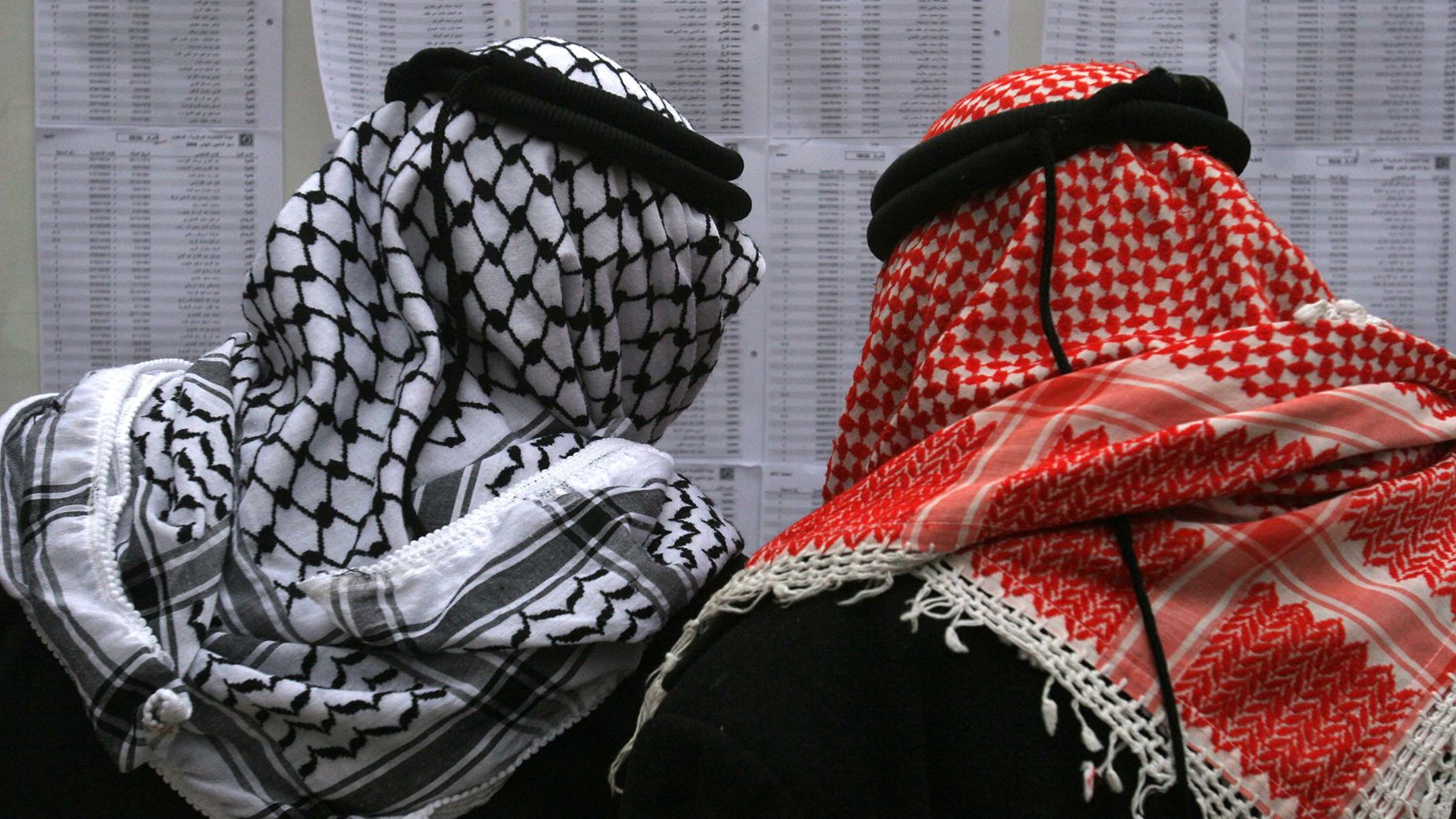Over the Thanksgiving holiday weekend, three Palestinian college students were shot in Vermont, two of them while wearing keffiyehs, in a crime their families have said was “fueled by hate.”
Although keffiyehs are worn across the Middle East, in recent decades they have come to be identified in particular as a symbol of Palestinian identity and resistance. At pro-Palestinian protests across the world amid the Israel-Hamas war, demonstrators have sported the scarves around their necks or used them to cover their faces.
Originally worn by shepherds and nomadic farmers, the keffiyeh “has become an iconic piece of clothing globally worn by anti-colonialist revolutionaries, activists, and the like, while still worn in the traditional headwear fashion by elders and farmers,” said Majeed Malhas, a Palestinian-Canadian journalist and PhD candidate in anthropology at the University of Toronto.
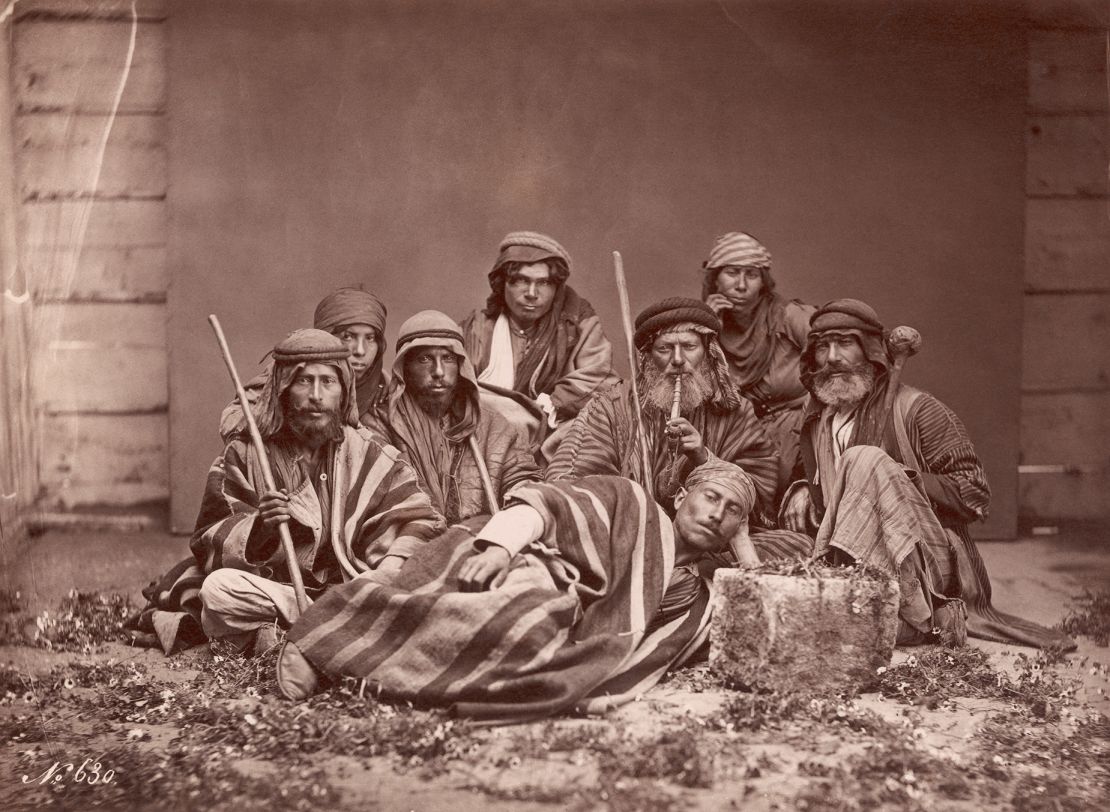
What is a keffiyeh?
A keffiyeh — sometimes spelled kufiyya or kaffiyeh in English — is a traditional scarf worn across many parts of the Middle East. Typically, it is either black and white or red and white, featuring different patterns throughout and tassels on its edge.
Wafa Ghnaim, a researcher and curator specializing in the history of Palestinian clothing, told CNN until the 1920s, keffiyehs — also called hattahs or shamaghs — were worn mostly by nomadic Bedouin men in historic Palestine.
Ghnaim, who is a research fellow at the Metropolitan Museum of Art in New York City, told CNN in her work she often sees 19th century keffiyehs made of cotton, silk and fine wool, and incorporating white, black, green and red threads.
“All people, whether men or women, wore headdresses in this part of the world. Villagers and townspeople had different styles of headdress than those of the Bedouins,” she explained.
“Bedouin men would fold the keffiyeh diagonally and secure it to their head using a ‘aqal or headrope.”
In addition to acting as a visual marker of Bedouin identity, the scarves serve a practical purpose: They help protect the wearer from the fierce desert sun and sand.
And the patterns woven into each keffiyeh, Malhas told CNN, “reflect different aspects of the land of Palestine, such as the olive tree and fishnet.”
The red and white keffiyeh is also sometimes linked to Jordanian nationalism because British commanders used them as part of the uniform for the Desert Patrol, a Bedouin unit of the Arab Legion. But keffiyehs of all colors have been worn by Palestinian activists and resistance fighters, according to Malhas.
In addition to the traditional style worn on the head, today the scarves are also seen worn around the neck and as shawls across the shoulders.
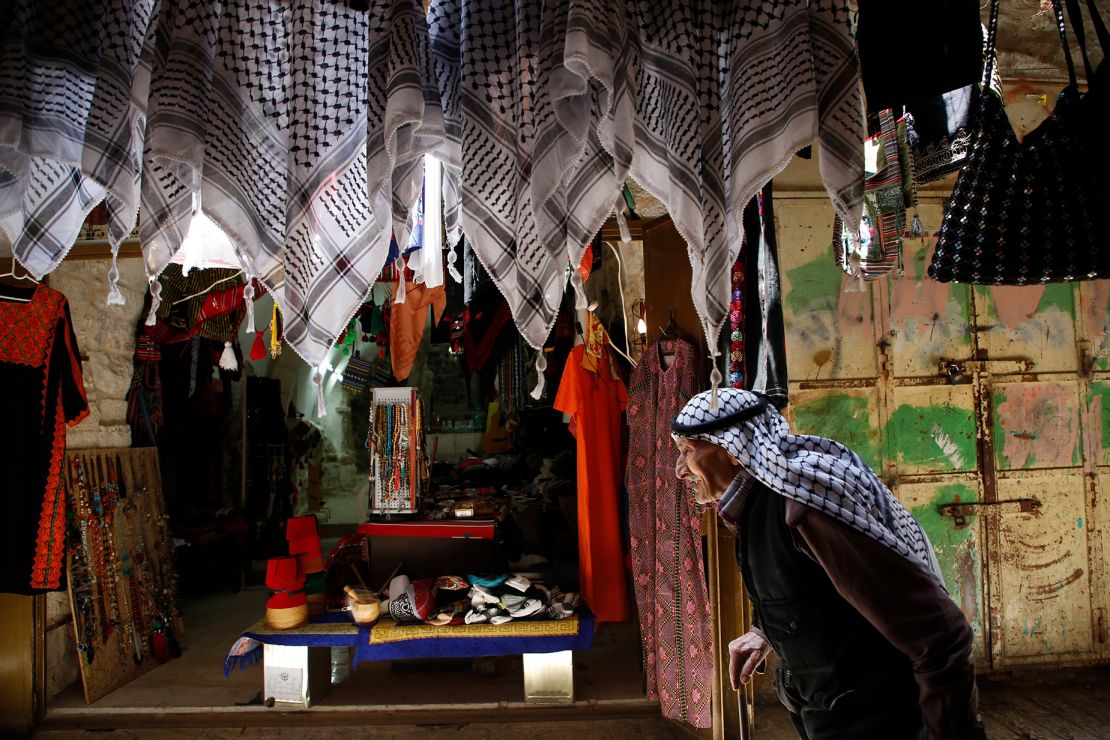
What the keffiyeh means to Palestinians
For many Palestinians and people of Arab descent around the world, the keffiyeh serves as a crucial link to their culture.
Dalia Jacobs, a Palestinian brand strategist and creative director, told CNN she wears a keffiyeh made in her hometown, Hebron, when she travels abroad.
Wearing the keffiyeh feels “like carrying home on my shoulders,” she said, describing the scarf as “a symbol of resistance and existence.”
A.S., a 26-year-old Palestinian-American living in North Carolina who asked to be identified only by her initials due to privacy concerns, said the keffiyeh is like “a child’s comfort blanket” for her.
The keffiyeh “says who I am and carries my family’s history with me always,” she told CNN.
Ghnaim similarly said the keffiyeh reminds her of her father, while tatreez — traditional Palestinian embroidery — reminds her of her mother. To combine the two pieces of Palestinian cultural heritage, she used traditional embroidery techniques to adorn her black and white keffiyeh.
“My fondest memories are in making this keffiyeh, and wearing it with pride and joy for my beautiful people.”
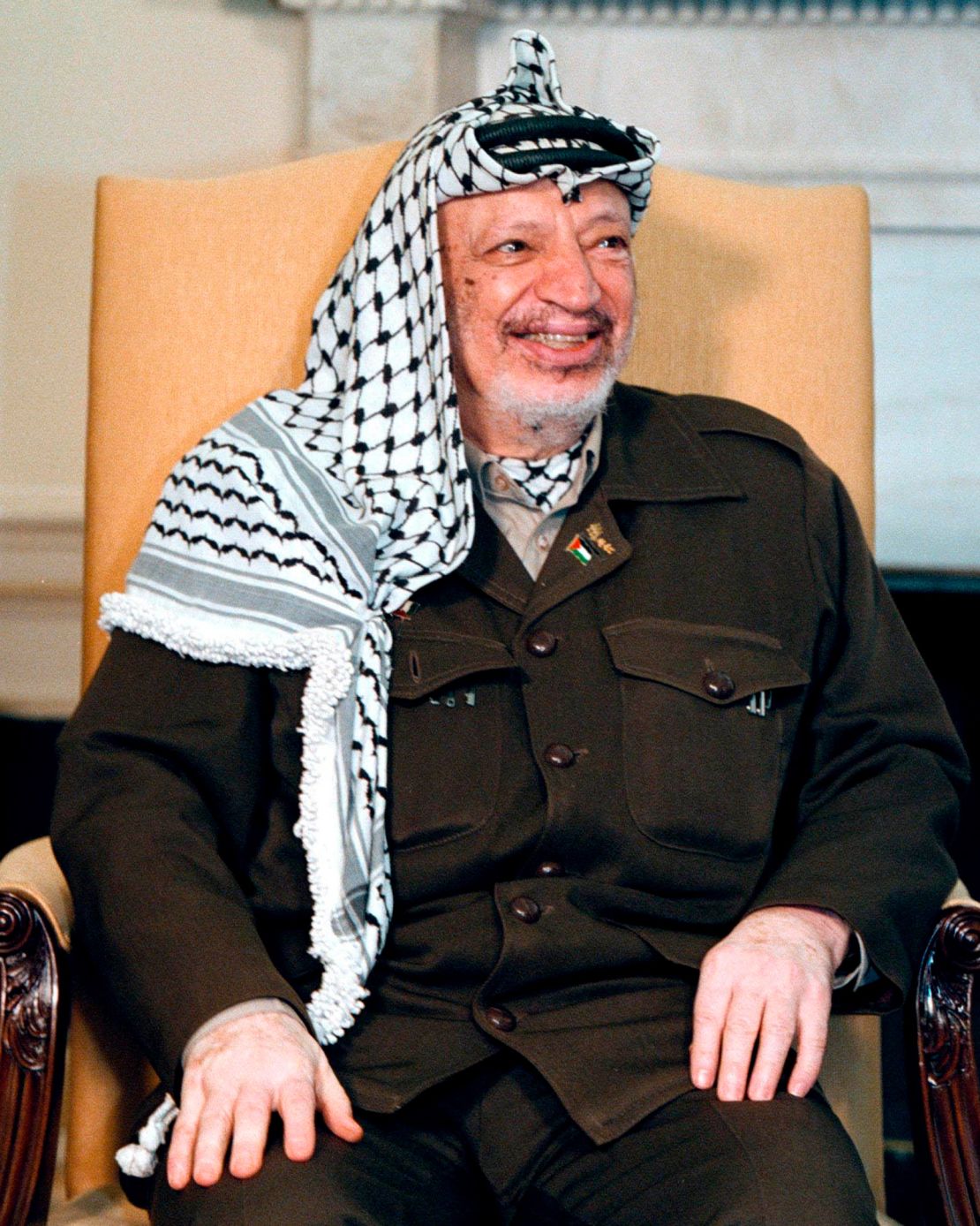
How the keffiyeh became a symbol of resistance
In addition to symbolizing cultural identity, the keffiyeh has also taken on a political dimension, like many other garments tied to cultural or religious heritage and nationalism.
Ghnaim traced this political dimension to the 1930s. During the Arab Revolt, between 1936 and 1939, when Palestinians sought to end British occupation and establish their own independent country, Palestinians across social classes and religions wore the black and white keffiyeh to symbolize their solidarity, according to Ghnaim.
During the 1960s, there was another resurgence in the keffiyeh as political symbol, with the scarf worn by both men and women. Yasser Arafat, who served for decades as the chairman of the Palestine Liberation Organization, was often pictured wearing the black and white keffiyeh, which further cemented the scarf as a symbol of the Palestinian national struggle.
Leila Khaled, a former militant made famous by her role in a 1969 plane hijacking and member of the Popular Front for the Liberation of Palestine, part of the Palestine Liberation Organization, was also often pictured wearing a keffiyeh wrapped around her hair and neck in the 1960s and 1970s.
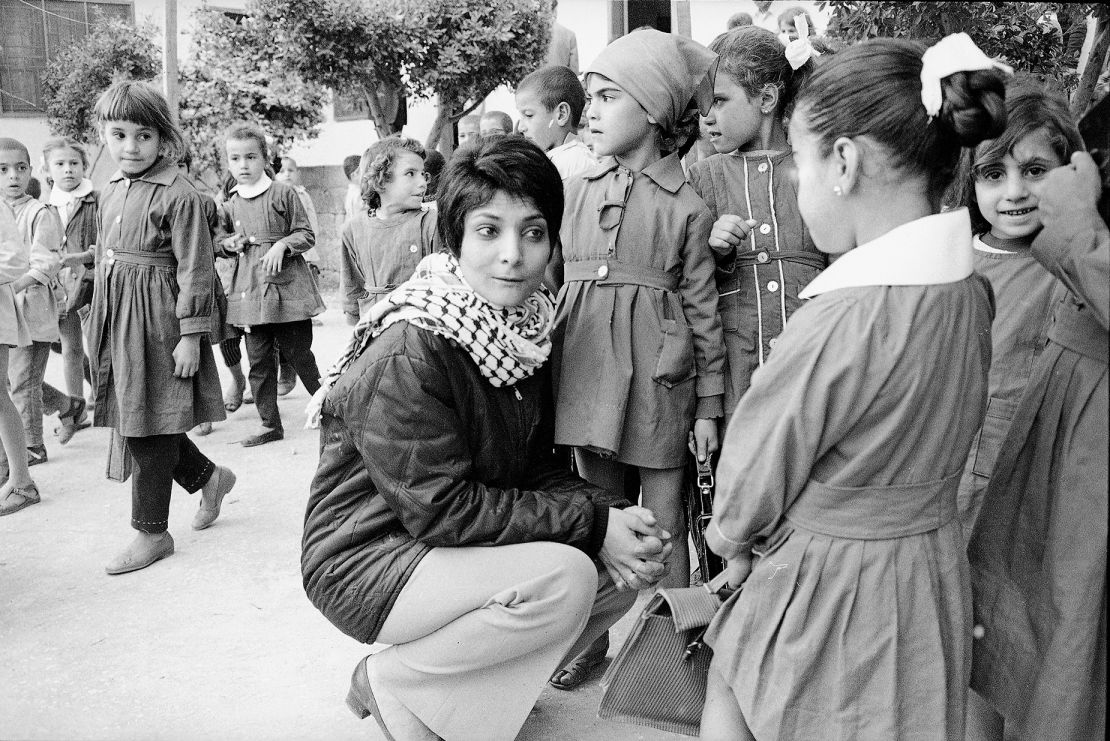
Malhas, who grew up as a second-generation Palestinian in Jordan in the 2000s, told CNN that wearing the black and white keffiyeh could be seen as a sign that he was “ungrateful” to Jordan as a host country. The scarf “was seen as “a symbol of defiance and pan-Arabism” and could be controversial due to its ties to Palestinian identity. “My family would be uneasy with me wearing it” in Jordan, he said.
He recalled being harassed during middle school for wearing one. An older boy told him, “If you don’t like it here, just hop on a boat and leave.”
At recent pro-Palestinian protests across the world, organizers have encouraged attendees to wear keffiyehs to show solidarity with Palestinian people. CNN previously reported that one protester in France said he was fined 135 euros for wearing a keffiyeh after the country banned all pro-Palestinian protests.
But wearing the keffiyeh may also expose wearers to anti-Palestinian sentiment or Islamophobia: An attorney for the students shot in Burlington said he believed the students were targeted in part because they wore keffiyehs. And a woman in New York was arrested and charged with a hate crime after she allegedly accused a man wearing a keffiyeh of supporting Hamas and attacked him in early November. She has pleaded not guilty.
Can anyone wear a keffiyeh?
In addition to serving as a symbol of national identity and resistance, keffiyehs have also made it into the world of mainstream fashion. In one episode of Sex and the City, Carrie Bradshaw sports a tank top mimicking the design of a keffiyeh. And both luxury and mainstream retailers have sold keffiyehs as fashion accessories, divorced from their history.
But stripping the keffiyeh from its original context can be contentious. In 2021, Louis Vuitton sparked accusations of cultural appropriation when it debuted a $705 “keffieh stole,” according to multiple reports. The social media backlash reportedly forced the luxury brand to pull the item off its website. Louis Vuitton declined comment to multiple outlets at the time. CNN has reached out again for comment.
Ghnaim urged wearers of the keffiyeh to do their research about the garment before wearing it.
“Over the past 10 years, the keffiyeh has become appropriated by the fashion world without cultural attribution to its Palestinian origins,” she said.
“Cultural appropriation leads to cultural erasure, and it is of utmost importance for those wearing this scarf to educate themselves on its meaning and history. It is not a garment that anyone can wear,” she explained. “It symbolizes Palestinian solidarity, liberation and freedom.”
Malhas, on the other hand, said while non-Palestinians should be careful when wearing the keffiyeh in the traditional style worn by Bedouins, in general, non-Palestinians wearing the garment can be a “great show of solidarity.”
